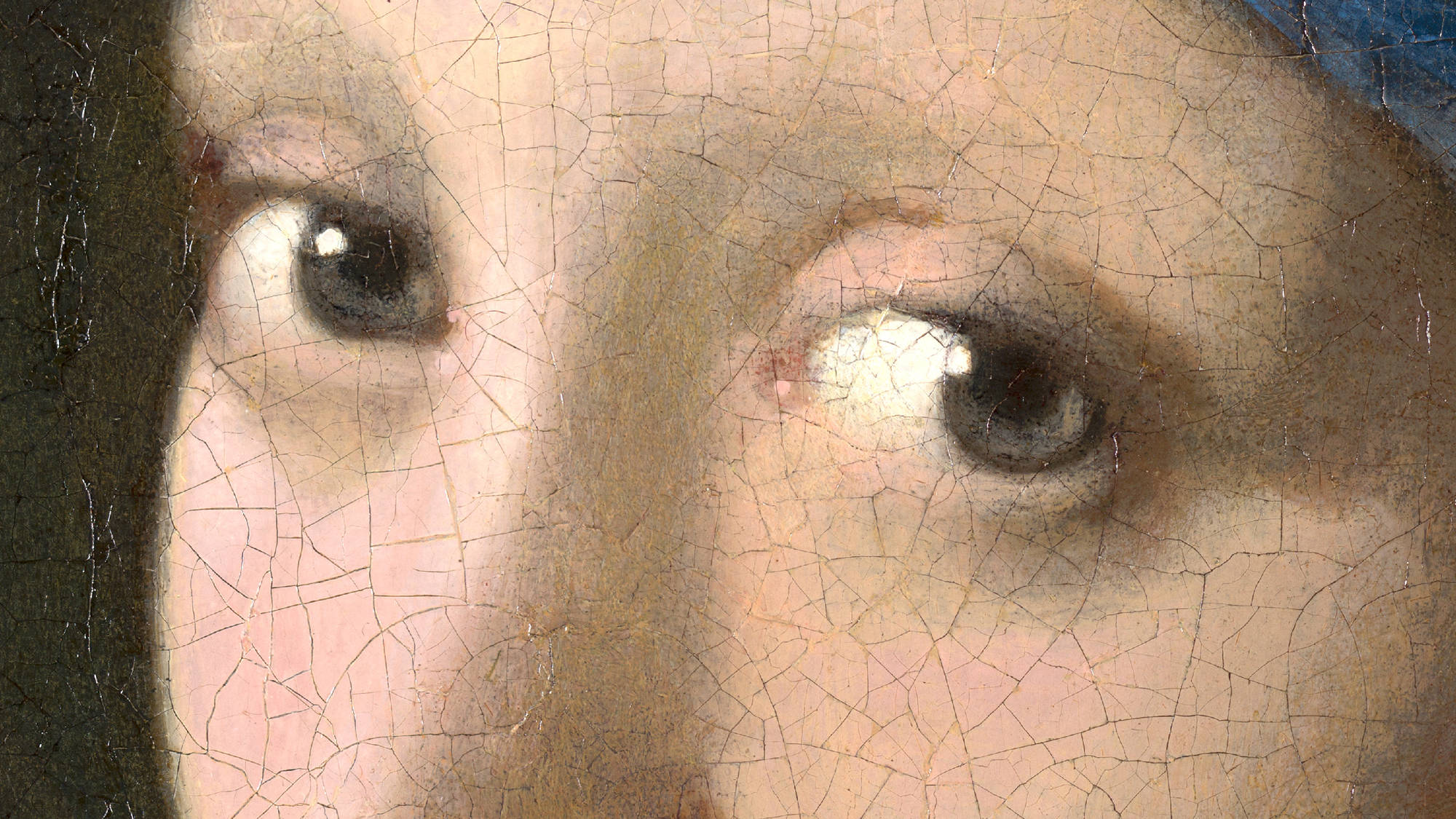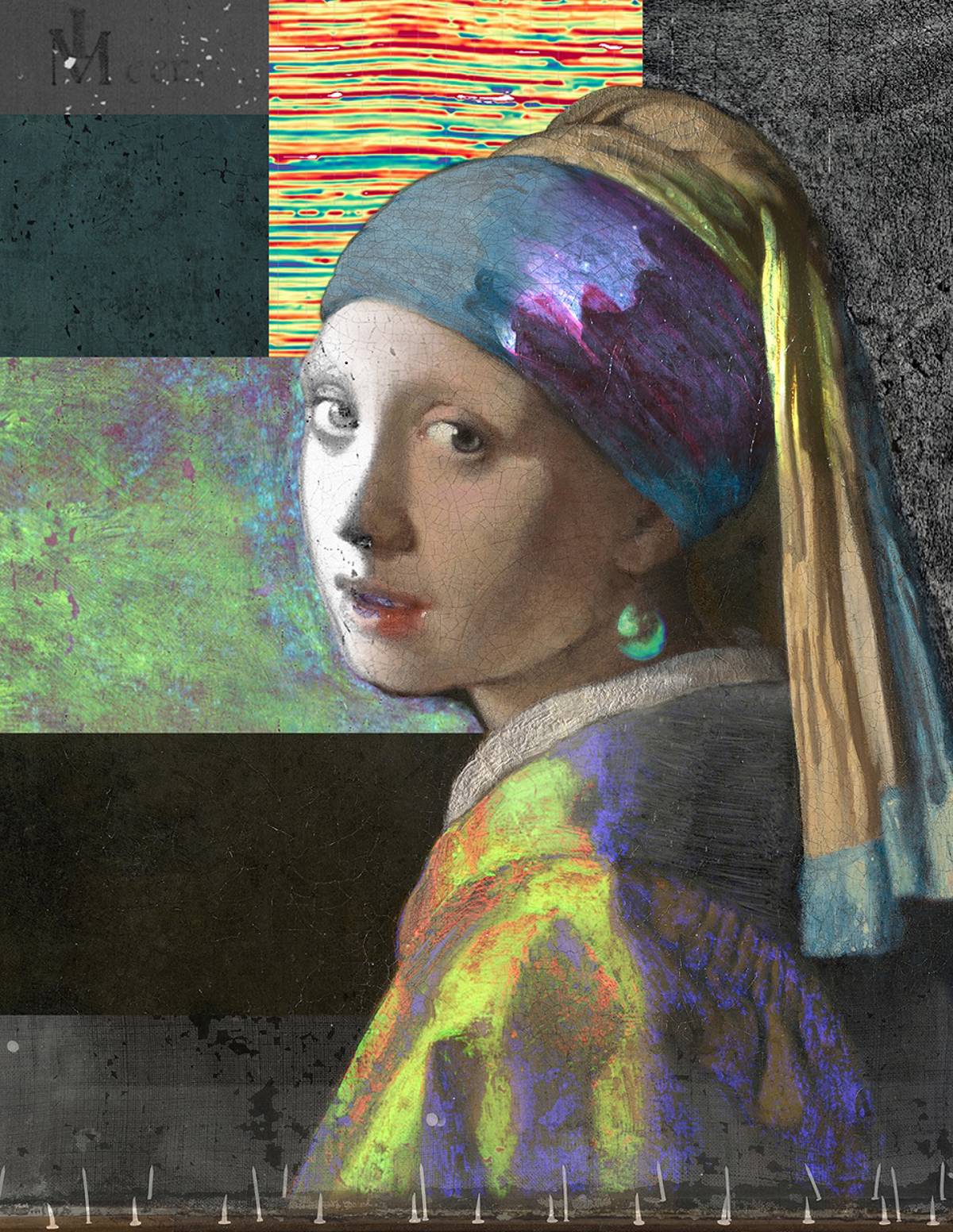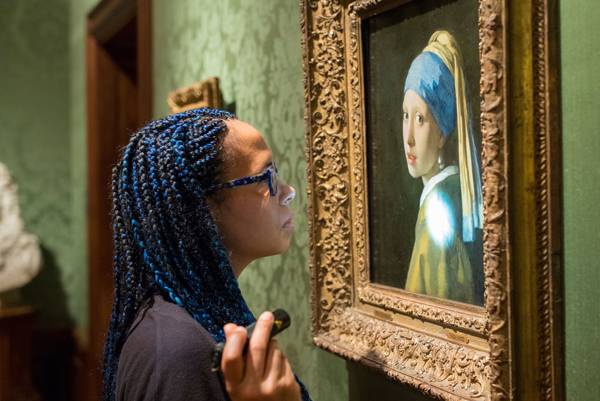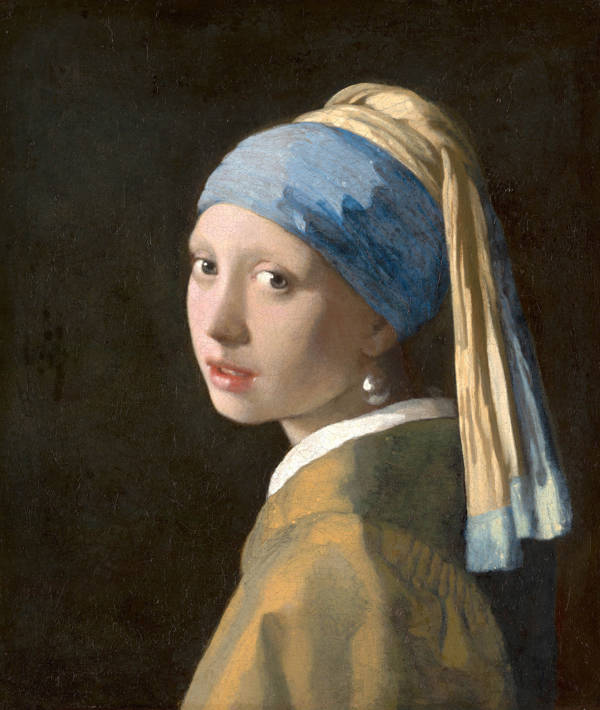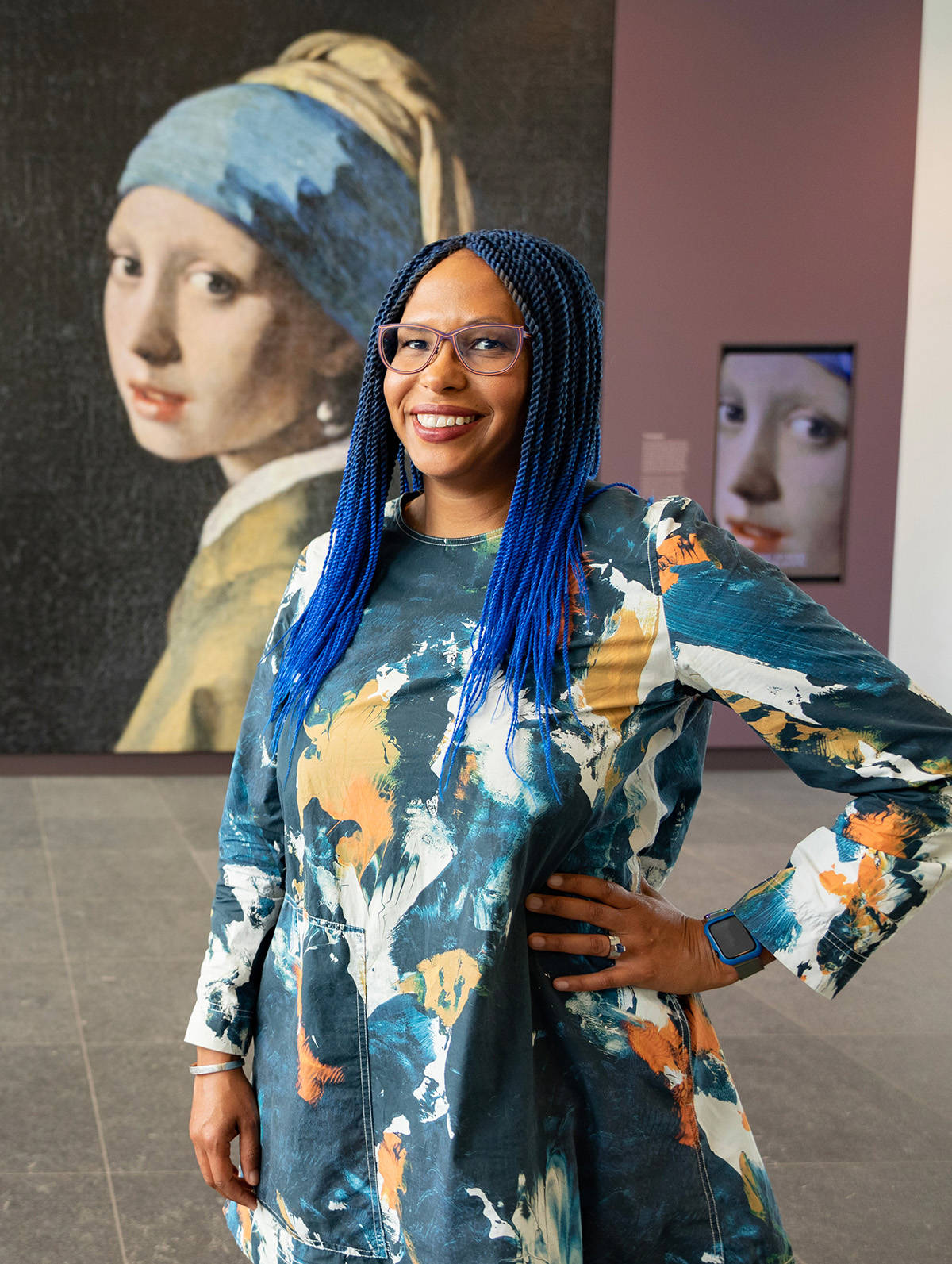
What did the Girl with a Pearl Earring look like when Vermeer applied his final brushstroke to the canvas and he took the -now world-famous painting- off the easel? Are we still looking at the same painting as he once intended? And what painting techniques would he have used? In the freely accessible presentation Who's that Girl? the Mauritshuis shares key research findings on what the Girl must have looked like in 1665.
The presentation in the museum's foyer also includes a mega-sized 3D print of the Girl, which you can see ánd touch. Thanks to very advanced research techniques, we have come a whole lot closer to Vermeer.
